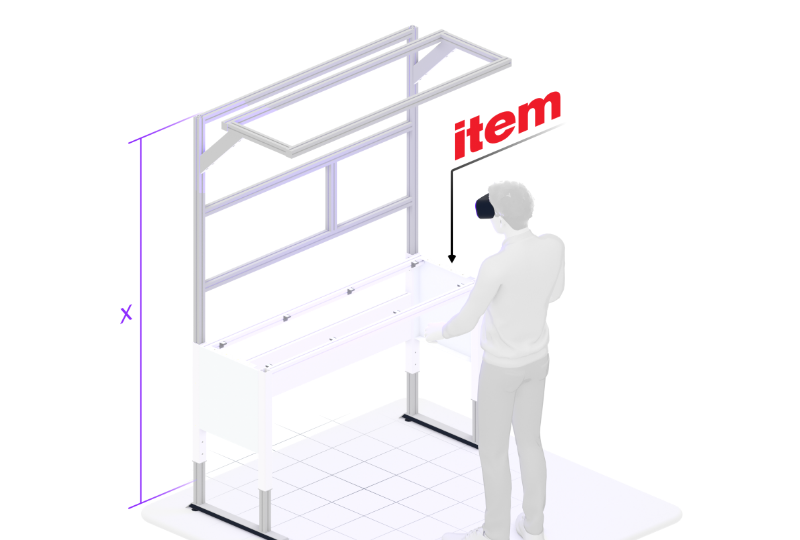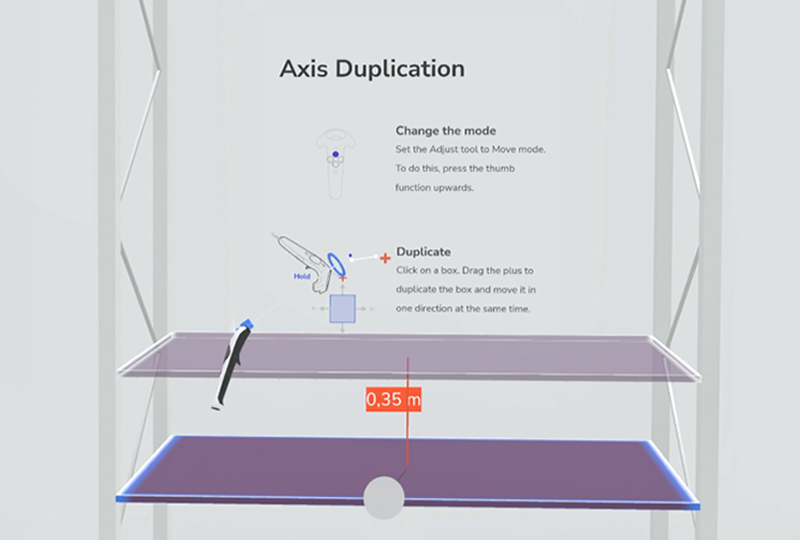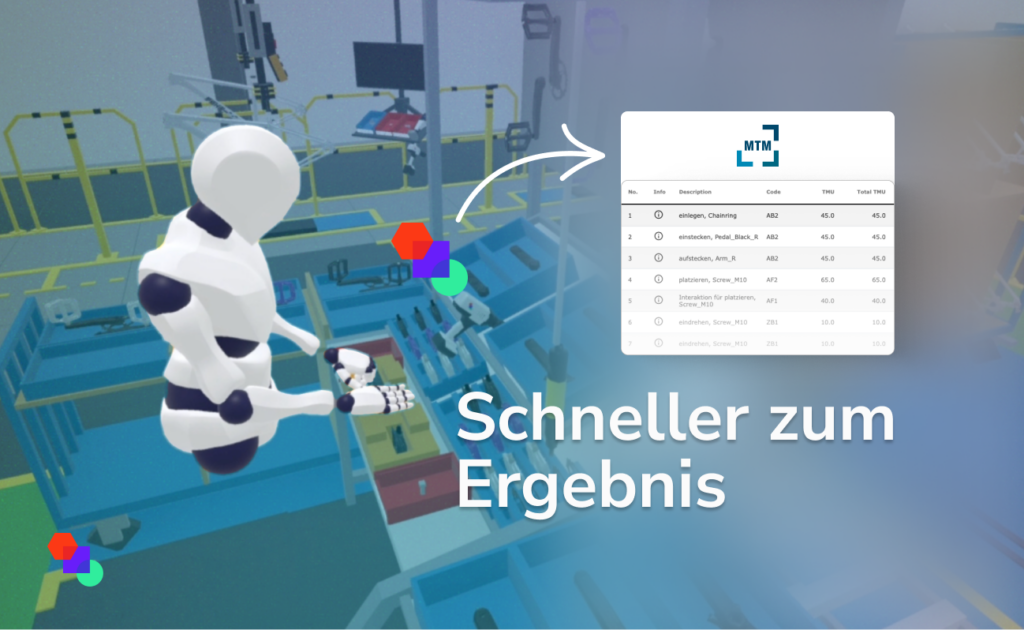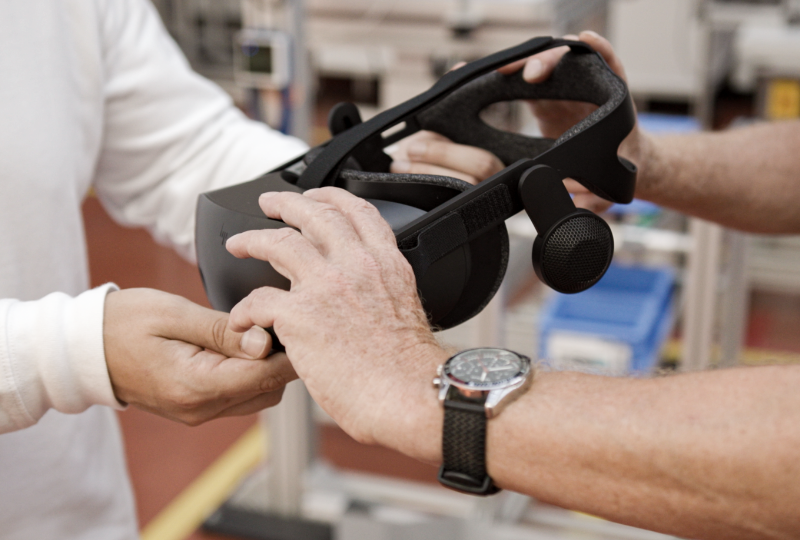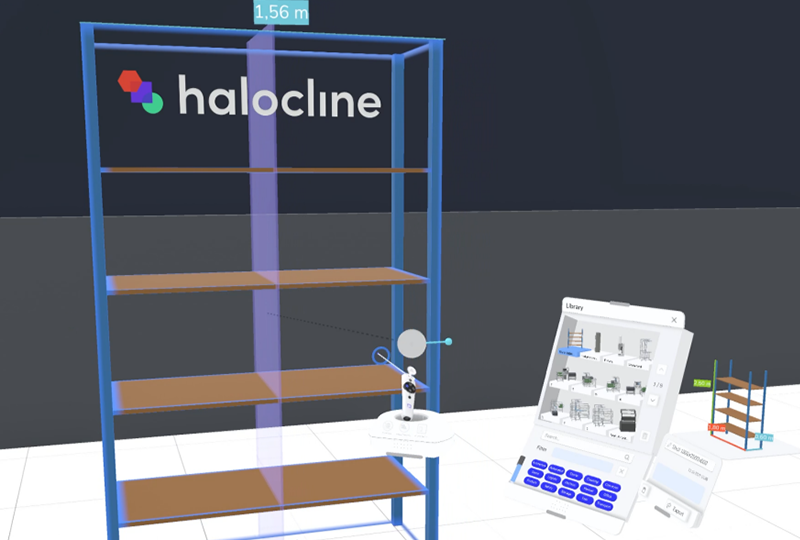
20% less process time
Successful cooperation between Sanner, item and Halocline
Special products require special development measures. New technologies help to bring important medical products from the design phase to industrialization more quickly. Halocline, item & Sanner are demonstrating the benefits of virtual reality (VR) and how a good partnership can advance the engineering cycle in a joint project.
Particularly in the case of medical products, every step in production must be perfect; all assembly steps must meet precise specifications and guidelines so that the product can be launched on the market. As a CDMO expert in the fields of medical technology and diagnostics, Sanner GmbH frequently develops new plastic components on behalf of customers and supports pharmaceutical companies throughout the entire product development process — from the initial idea to the design of the production system to series production and beyond. A current customer project involves a drug delivery system: In the future, Sanner will produce the multi-part assembly with different chambers and assemble it with a chip to dosage specification — a project that poses numerous challenges.

Three partners, one common goal
The industrialization phase in this project is very short — so not much time must elapse from initial development to serial production. The assembly process must be carried out in accordance with GMP guidelines in a clean room and meet ESD requirements in accordance with DIN EN 61340–5‑1. In addition, spontaneous customer requirements in the early product development phase must also be integrated into the assembly process, while at the same time ensuring that the results in the development phase are backed up by planning. A new, flexible approach is offered by the design and validation of assembly workstations in virtual reality (VR). Together with item and Halocline, Sanner creates ideal conditions for the successful implementation of this project.
item Industrietechnik GmbH is the pioneer in modular systems for industrial applications and a partner to the manufacturing industry around the world. The product portfolio includes more than 4,000 high-quality components for the design of machine frames, workstations, automation solutions and lean production applications. The basis of the modular system are aluminum profiles, a matching connection technology and a wide variety of functional elements.
Halocline GmbH & Co. KG is developing a VR editor solution for the manufacturing industry that enables both: creating and working with the digital twin of production. The intuitive analysis of geometry and product structure helps customers quickly gain an understanding of individual assemblies and their interrelationships in order to design products that are ready for assembly right from the start. In a realistic VR environment, the installation and removal of components can be tested, as can assembly processes.
Experience instead of just imagining
In particular, Sanner is breaking new ground with value-added work in VR. In the process, 3D data is imported into Halocline’s software. The assembly table that can be experienced in VR, which is later manufactured by item, is now located in a virtual factory room. According to the motto “experience instead of imagine”, the project participants can move freely in the room with their avatar via VR glasses and test the assembly processes on the table — a procedure that far exceeds the purely visual imagination of 2D or even 3D drawings.
In addition to pure imagination, however, the VR solution has numerous other advantages: planning errors and inaccuracies can be detected at a very early stage. This avoids high modification costs for a conversion at the real workplace in the implementation phase. Since haptic mock-ups are no longer necessary, planning time is shortened. Changes to the digital model can be carried out in VR with much less effort and correspondingly less processing time. Also not to be neglected are the assurance of the actual feasibility of the assembly process as well as the determination and validation of process times. In addition, all process steps are checked for collision and completeness — so that in the end a safe and complete assembly process is defined and validated.
Significant workload reduction, time and cost savings
The advantages are also obvious for those who will later work at the assembly table: Thanks to realistic VR test scenarios, the workplace design is put through its paces from the outset from an ergonomic point of view. If, for example, it is determined during the virtual testing of the work process that certain process steps are too stressful for joints or the spine, these can still be adjusted in the VR model by rearranging the process steps, the table design or the general production setup. This procedure is repeated until an assembly process that is both ergonomic and efficient can be implemented in the available space.
Based on the results from the first VR design phase the adjustments are first made in the 3D concept, subjected to another extensive test and inserted in the real factory layout for the purpose of space testing. Once the virtual concept has been completed and finalized, item will be able to submit a quotation for the production of the customized assembly workstation within just one week. The assembly of the prototypes is to take place in the coming months and will then also be approved by the customer before the 0‑series can start.
“Compared to conventional planning methods such as CAD model or a real life set-up in our technical center, we were able to save at least one week of project time and optimize 20 percent process time.”





